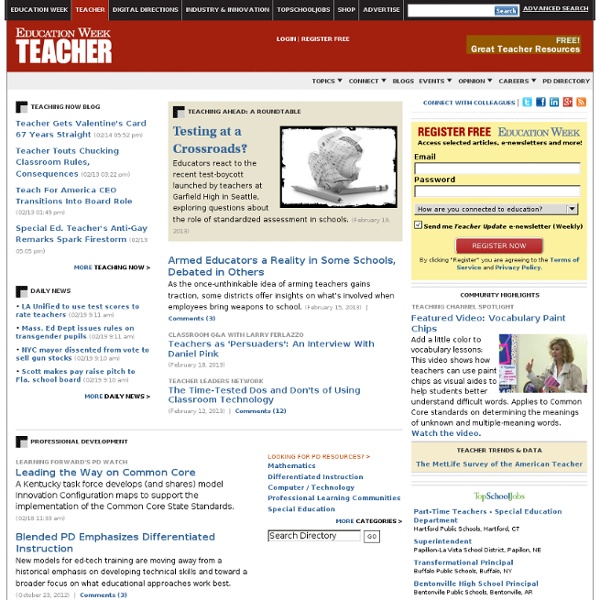



» 100+ examples of use of social media for learning C4LPT EmailShare 0EmailShare Note: this page dates back to 2011. More up to date information is to be found in my Social Learning Handbook 2014. Here are over 100 ways that different social technologies (and tools) are being used by learning professionals worldwide – compiled from the comments of those who have contributed to the Top 100 Tools for Learning 2009 activity. Blogging (1) “Blogs are great for learning from others, reflection, story sharing, facilitating connections among people, philosophizing, and much more” Janice Petosky, Instructional designer,West Chester, Pennsylvania (2) “Writing a blog is a learning activity, of course, but reading the best blogs that are available is one of my most productive learning experiences.” (3) “Blogging is my chief way of making sense of things“ Michele Martin, Freelance Learning Consultant, USA (5) “While everyone seems to get the blog thing now, few are leveraging the technology for what, at its root, it really is: a very quick web page creator.
Education Week Teacher Professional Development Sourcebook Annual Reports Books Back Issues Edweek Spotlights Subscriptions Site Licenses Reprints Recruitment Advertising Display Advertising White Papers Professional Development Directory Advanced Search July 23, 2012 Login | Register | Subscribe Free Sign Up for FREE E-Newsletters Current Issue Browse Sourcebook News & Notes Featured Stories Research Data From the Field PD Calendar PD Directory Directory Home Company Index Category Index Search Directory Add Your Free Listing Directory Categories Featured Categories Classroom Management Differentiated Instruction English/Reading Mathematics Social Studies/History Special Education See More Add Listing Add Your Free Listings Add Enhanced Listing Update Your Listings Contact Us Teacher PD Sourcebook Directory is the most complete interactive, online professional development resource for K-12 educators. Professional Development Categories Includes resources, materials, and lesson ideas for working with students with special learning needs. English Language Learners More Categories > Math 1.
Teacher 4Teachers : Main Page Integrating Technology in the Classroom TeacherTube - Teach the World CITE Journal The CITE Journal is an online, peer-reviewed journal, established and jointly sponsored by five professional associations (AMTE, ASTE, NCSS-CUFA, CEE, and SITE). This is the only joint venture of this kind in the field of teacher education. Each professional association has sole responsibility for editorial review of articles in its discipline: Technology and Science Education (ASTE) Technology and Mathematics Education (AMTE) Technology and Social Studies Education (NCSS-CUFA) Technology and English Education (CEE) Educational Technology: General (SITE) The CITE Journal has a unique Commentary feature, which permits readers to author short responses to articles published in a commentary strand linked to the article. In addition to its discipline-based journals, CITE Journal has a General Educational Technology section and three cross-disciplinary sections: Editorial, Current Practice, and Seminal Articles.
Blogs Support Blogging! - Links to School Bloggers The Top 100 Bloggers of 2013: Ten Niches, Ten Bloggers! Welcome to this compilation of the top 100 bloggers of 2013! I’m going to go through ten separate categories and take a quick look at all the best and brightest from those markets. Ranging from health and fitness to SEO and internet marketing, there’s a lot of fantastic bloggers. This list won’t be the be-all and end-all of the ultimate blogging enthusiasts, but it will feature many bloggers who have stood out and are pretty recognisable in their respective niches. So without further ado, let’s dive right in! Top 10 Social Media/Internet Marketing Bloggers Jeff Bullas – Jeff Bullas is a very popular social media blogger, who runs a popular blog all about social media and online market (bet you weren’t expecting that!. Jason Keath – Jason founded Social Fresh, a social media company that has grown exponentially since its inception back in 2008. Kim Garst – Kim runs both a personal blog as well as Boom! Stanford Smith – Mr.
Tumblr the free encyclopedia